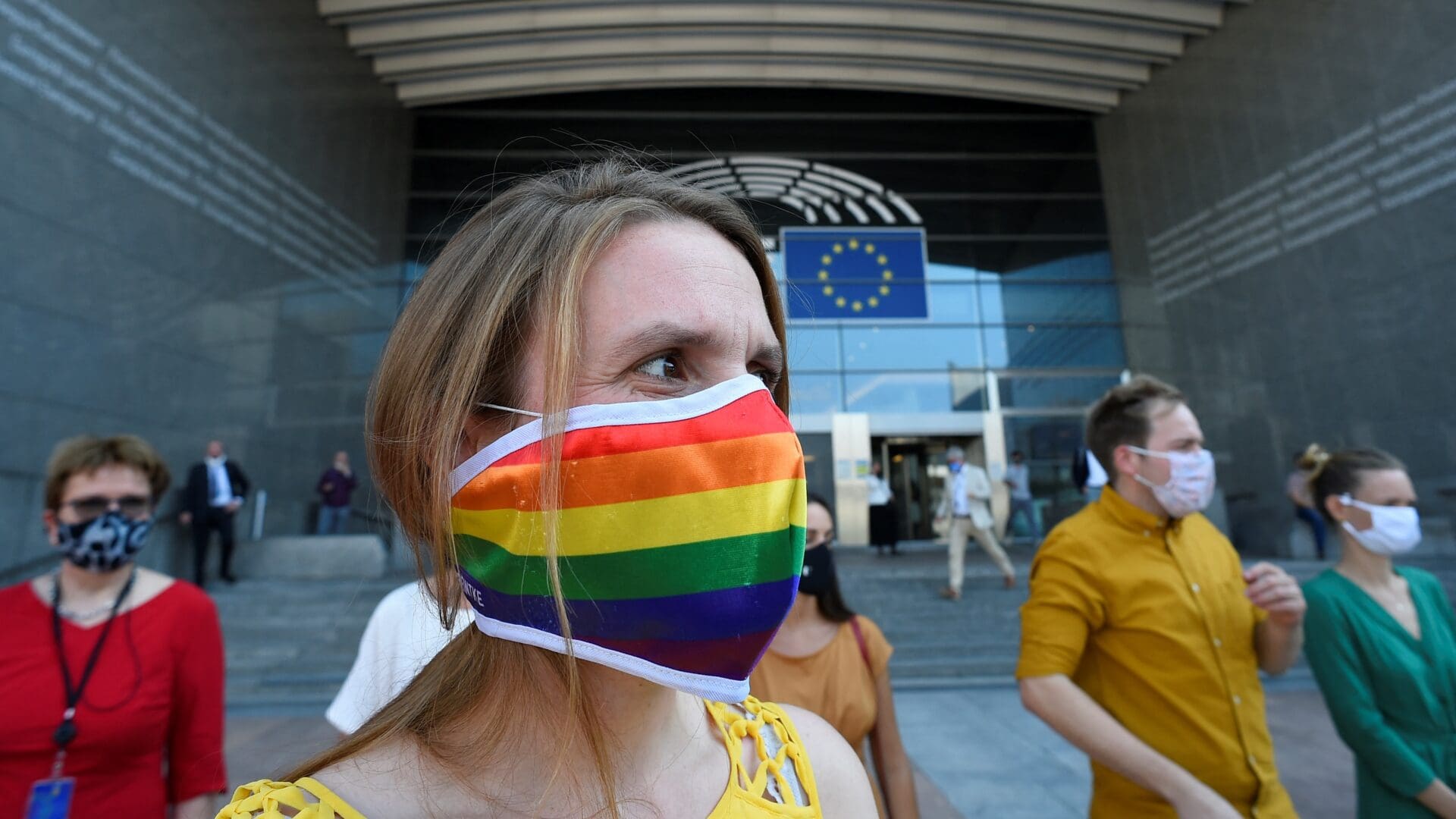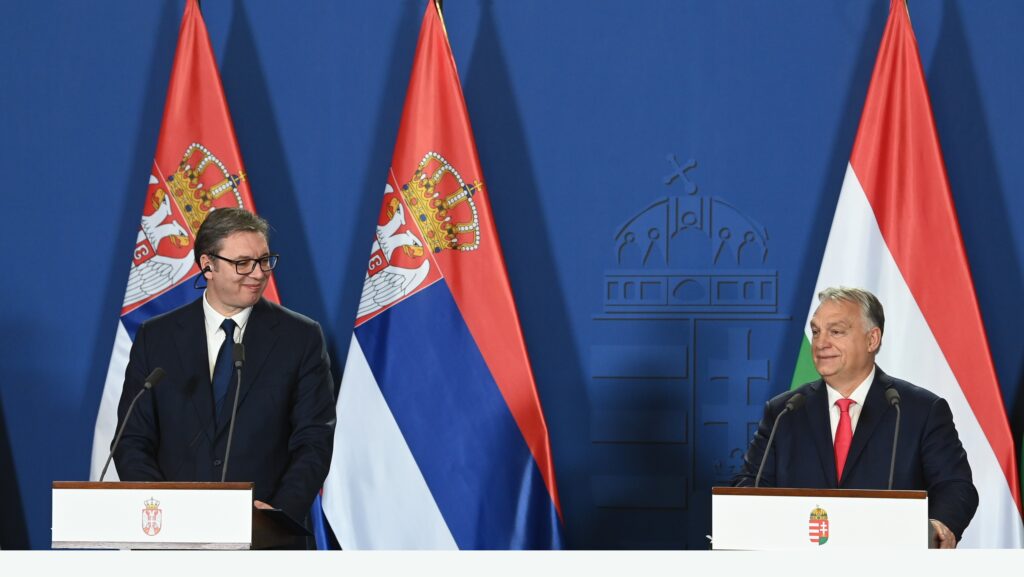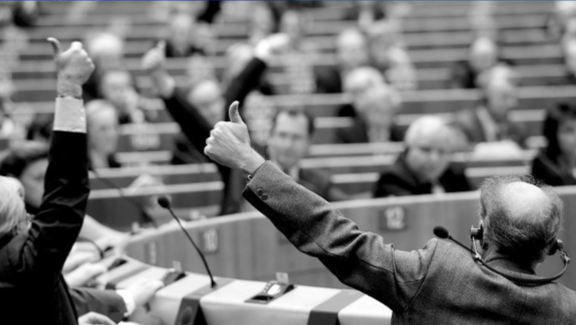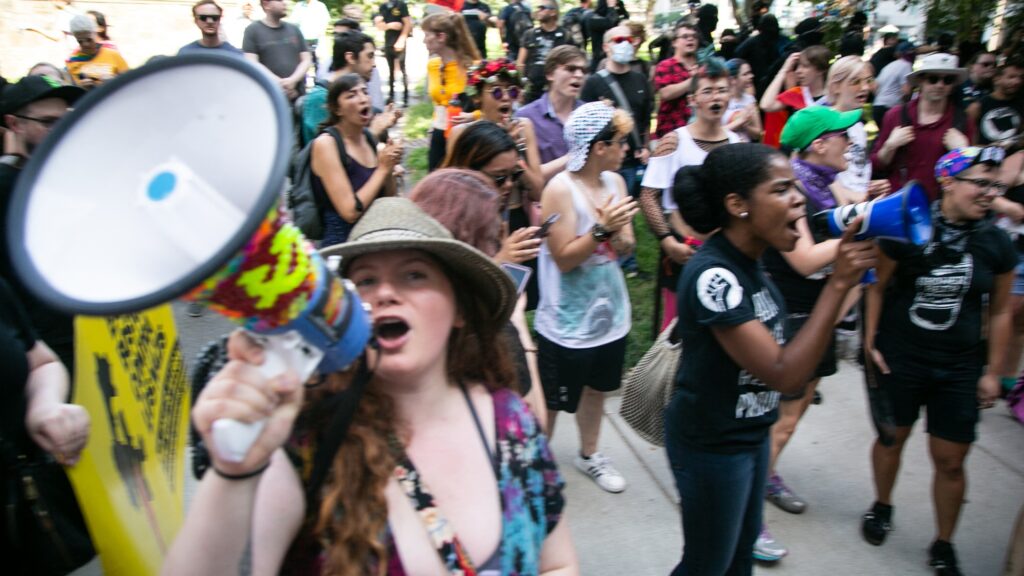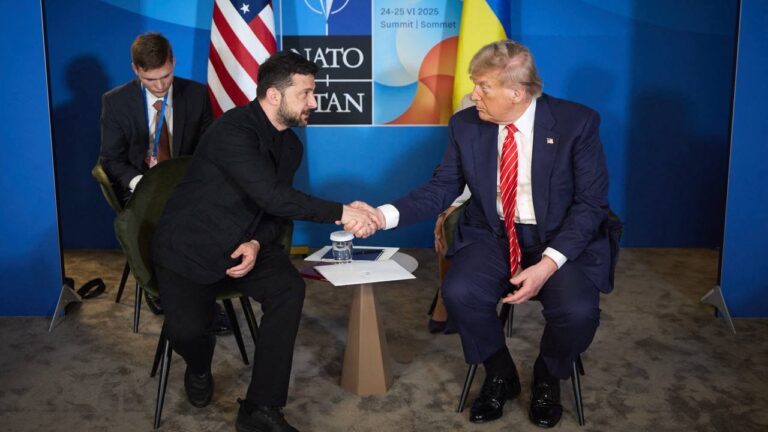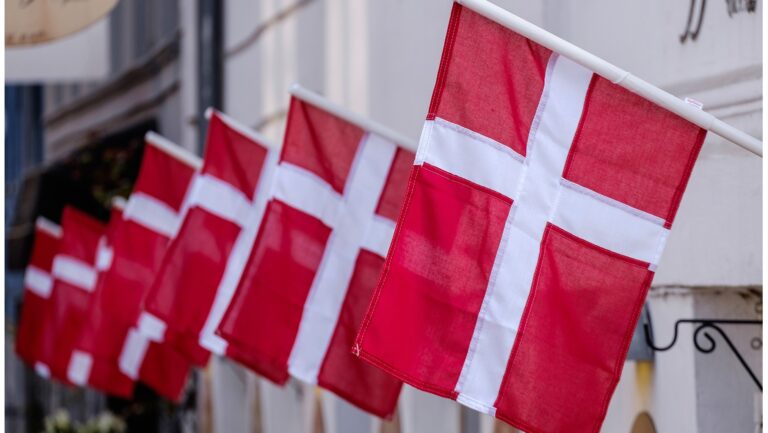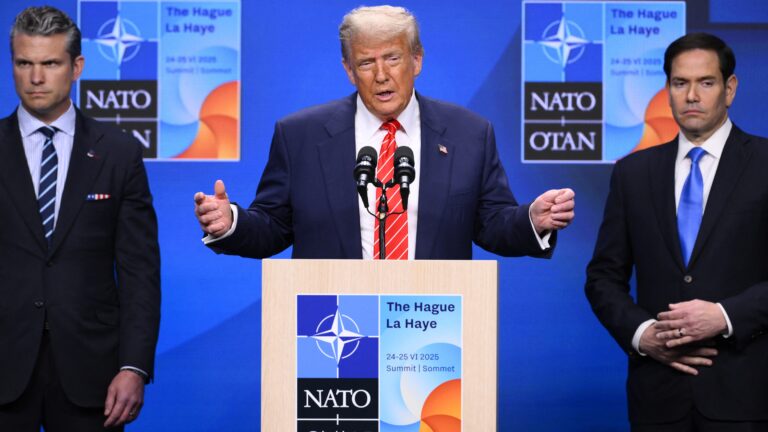The European Parliament as a Platform for Promoting Gender Ideology Instead of Broader Minority Protection
Over the last thirty years, we have witnessed the growing polarization of the European Parliament, and the effects of this on the policies adopted by it. Certain ideologies imposed by left-wing forces have taken over and co-opted all policy fields, especially when it comes to gender ideology and minority protection. The protection of certain minority groups is mainstreamed, while serious human rights violations, including the persecution of religion and religious minorities, go unnoticed. The starting point of the texts adopted by the European Parliament thirty years ago was—based on the documents—that a ‘human being’ was either a ‘woman, child or man’. Today, by contrast, defining what a human being is takes several lines in the text. While at that time the categories and messages were clear, they have slowly been turned into a blurry muddle. Although these trends have been observed by many, this is the first time that thorough research has been conducted on them. The authors of this article examined the reports and resolutions of the European Parliament (‘EP-Resolutions’) in order to shed light on these trends.
What do the policies mean when it comes to the future of the European integration process? Does the EU in fact promote the idea that gender should be recognized as a chosen identity regardless of one’s biological sex? How prevalent is this question compared to other social issues? Both a quantitative and qualitative approach were used to answer these questions. The results demonstrate very noticeable trends over the last thirty years, which include major milestones. The texts examined cover the resolutions of the European Parliament for the current parliamentary cycle, regular reports on fundamental rights in the EU, as well as human rights reports concerning the situation in the rest of the world.
The Aim of the Research
The history of the EU began as one of economic cooperation and safeguarding peace in Europe. The functions of the European institutions have been shifting ever since, as have the concepts of protecting fundamental rights in the EU and human rights worldwide. Originally, the role of the European Parliament was merely to consult and debate common issues falling within the competence of the international organization. Since 1979, however, the European Parliament has accrued more competences.[1] It started to gradually demand more and more functions, rights, and powers for itself, and its role in the institutional architecture of the EU also shifted. Meanwhile, certain political ideas became increasingly present in the EU institutions as the influence of outside organizations grew and political realities changed. The roles of EU institutions are also changing. Nowadays, we can observe that the European Parliament often places items on its agenda in fields where it does not have competence, adopting ultra vires acts or soft laws lacking legitimacy. These aspirations are assisted by external organizations, lobbying groups, etc., providing help from the outside for the preparation of reports, amendments, and analyses.
It is important to note that neither the left nor the right enjoys a clear majority in the European Parliament, so policymaking relies on longstanding deals between the political groups of the centrist European People’s Party and the left-of-centre Socialists and Democrats. After the 2019 European elections, even combined they fell short of an absolute majority, which meant that certain resolutions have been adopted with ad hoc majorities or relative left-wing majorities with the support of socially left-leaning conservatives. This kind of political fragmentation has led to serious compromises on both sides, as well as the possibility of adopting language on social policy where the leftist groups are united—such as in matters related to sexual minorities and feminism. This is true both in resolutions dealing with matters within the EU and concerning third countries or global issues.
This study is an attempt to shed some light on what the European Parliament’s policies represent in this area today, and what the major milestones were that led to the adoption of these positions. The methodology focuses only on language included in texts adopted by the European Parliament. The evolution of the so-called ‘agreed language’ and the appearance of new language can give a tangible impression of the prioritization of certain aspects in the protection of fundamental and human rights.
The present analysis combines three different approaches. Firstly, the authors examined resolutions adopted in the 2019–2024 parliamentary cycle to see what the majority of the European Parliament represents today. Secondly, the authors looked at the annual fundamental rights reports of the European Parliament, which examine the situation of fundamental rights in the member states, from 2000 to 2022. Thirdly, the European Parliament also adopts annual human rights reports that look at the situation of human rights globally. These cover the period from 1993 to 2022. The examination of all these documents allow for a thorough quantitative and qualitative analysis, and makes it possible to draw substantive conclusions about the role the European Parliament plays in promoting progressive ideas both within Europe and globally. It also demonstrates the trends aiming at monopolizing monitoring power[2] in European decision‑making, in parallel to the European Parliament’s ambition to expand its competences in the field of fundamental and human rights.[3]
Analysis of the Resolutions of the European Parliament Adopted During the Ninth Term (2019–2024)
An examination of the wording of the titles of EP resolutions and reports from the current parliamentary term yields some interesting results. In comparison to legislative texts, non-legislative texts abound with language related to gender, feminism, and sexual minorities. An analysis of the linguistic environment shows that wording is used in either a neutral or progressive/left-leaning context. A simple quantitative comparison is in itself revealing: although no legislative texts feature the word ‘gender’ in their title, there are 19 non-legislative texts with such titles. If we examine legislative texts adopted by the EP since 2019, it is immediately apparent that there has not been a single resolution with a title containing the words gender, homosexual, or LGBT (or variations) adopted. When examining occurrences within the texts themselves, the results show 51 documents containing the word ‘gender’. These mostly occur in non-ideological contexts, for example work safety,[4] with the majority of documents simply containing references to other reports, datasheets, other annexes, or footnotes with the word ‘gender’. Ideological language usage can be observed in some instances, where explicit calls for gender equality or the need for gender-sensitive approaches are superfluously or arbitrarily highlighted without listing other groups that could have also been mentioned explicitly, but were not. This includes various regulations about deforestation, climate-related investments,[5] fostering digital skills,[6] product safety standardization,[7] space industry procurements,[8] agricultural funding,[9] entrepreneurship,[10] or metrology.
Terminology varies between calls for ‘gender equality’, ‘equality between women and men’, and ‘gender mainstreaming’ with some interesting single-use terms like ‘gender convergence’, ‘gender safety gap’, or ‘gender budgeting’.[11] One regular aspect of gender language is a focus on equal pay and equal participation in sectors or decision-making bodies—without specifying what the concrete inequality is or how that language carries an added value, compared to other anti-discrimination requirements that already feature in EU law and in any case need to be applied universally. It is also worth noting that no sectors or activities have been identified in which equality should be sought because men might be underrepresented in some way.
Gender, understood as a social construct rather than in terms of biological sex, appears in one instance regarding data collection by the European Union Drugs Agency, where collected data shall be ‘disaggregated by sex and, where possible, by gender’.[12] There is a single legislative text with a related subject matter, adopted in March 2023, about the principle of ‘equal pay for equal work or work of equal value between men and women’.[13]
A resolution about amending the EU Treaties called for the inclusion of non-discrimination based on ‘gender’ in Article 10 of the TFEU—in addition to sex and sexual orientation already featured in that article. This is unequivocally an initiative to introduce gender ideology and the recognition of more than two genders (male and female) in the EU Treaties, which would also make it enforceable in national legislation. In its resolution about the EU Strategy for Gender Equality, the EP stated that it ‘is concerned about the lack of an explicit prohibition of discrimination on the grounds of a person’s gender identity and gender expression in EU law’, thereby calling for recognition of gender identity and gender expression as immutable characteristics. The EU Gender Action Plan III[14] also lists gender identity as an element of intersectional discrimination women may face.
Continuing to examining legislative texts, results show that fifteen documents contain the word ‘sex’ or ‘sexual’. These mostly occur in a non-ideological context: mostly among general non-discrimination principles, or specifically in legislation related to preventing child abuse[15] (or in other criminal contexts[16]), work safety,[17] or standards of healthcare statistics.[18] The explanation is rather obvious: according to the Treaties, the European Union does not have strong competencies in social or family policies. Simply put, this is member state competence, not an EU competence. We may also assume that certain conservative governments simply refuse to allow phrasing that would recognize gender as a social construct rather than simply meaning men and women. However, this is only true in the case of legislative texts.
This lack of competence does not prevent, however, the European Parliament from trying to exert as much pressure as possible on other EU institutions, member states, and third countries on the matter,
in non-legislative texts, where the Council (national governments) are not involved. Furthermore, foreign policy is not an EU competence either and therefore does not fall within the competence of the European Parliament. However, the use of non-legislative texts is a clear soft-power instrument that in a few years could result in influence over legislative texts, with a view to mainstreaming gender ideology.
To further illustrate these trends, there are six resolutions about the LGBT(IQ) minority, and resolutions with women or gender in their title add up to a total of 43 (24 for women, 19 for gender). The comparative numbers in the titles of legislative texts are zero or almost zero. The attention of the European Parliament on gender and LGBT(IQ) language is most notable when searching the above keywords not only in resolution titles but in the texts of the resolutions adopted: out of the 2,000 resolutions adopted throughout 2019–2023, the abbreviation LGBT(IQ) is mentioned in 108 resolutions. In resolutions, the word ‘gender’ appears in 731, ‘women’ in 738, ‘disabled’ in 430, ‘Roma’ in 94, ‘abortion’ in 54, ‘Christian’ in 49 instances, and ‘God’ only once (in a resolution about Iran).
So-called gender mainstreaming efforts in the EU have also resulted in gender-related requirements in some unusual areas. The EP called on the European External Action Service (EEAS)[19] to appoint gender advisors in EU military missions, and to target a 50 per cent rate of women in management positions among heads of delegation and CSDP missions (which include military missions). Ironically, according to the 2021 budget discharge of the European Institute for Gender Equality, the EP called for gender equality in the staff of the institute because men were underrepresented in mid-level management (only 19%, a decrease compared to the previous year) and expressed the view that it is ‘concerned of the imbalance among staff overall’ (men only making up 29 per cent of staff).[20]
The EP also expressed its concern[21] because of the underrepresentation of women in STEM, including AI development, which in turn would cause ‘the replication of existing discriminatory practices and stereotypes and the development of “gender-biased algorithms”’. Therefore, the EP also called for the inclusion of ‘gender equality experts [in] human oversight infrastructures’ of AI technologies. The EP also called for gender-inclusive cities and gender-sensitive urban planning.[22] But the EP also sees it as possible to implement climate action measures efficiently if all climate action includes a ‘gender and intersectional perspective’, otherwise a ‘fair and just transition’, as well as ‘gender justice’ will be more difficult to achieve.[23]
In contrast to gender issues, other minorities such as autochthonous traditional and linguistic minorities, or vulnerable groups such as people with disabilities, receive much less attention from the EP. There were only a total of four resolutions with a focus on people with disabilities. This number for Roma people was three. ‘Poverty’ and ‘social inclusion’ occur in just one resolution title, which is exclusively about women’s poverty. One resolution dealt with religious minorities and three with national or ethnic minorities.
Another keyword examined that is clearly not a competence of the EU is the right to abortion. Abortion features in a negative context related to forced abortion in general, abortion forced upon disabled people, but also related to carnivores causing abortion in livestock. In the other 52 resolutions, the EP promoted abortion with the aim of elevating it to a human right, even when such promotion appears incongruous, as in the resolution commemorating journalists murdered in Malta and Slovakia.[24] The EP also adopted a resolution about amending the EU Treaties, with an amendment to Article 3 of the Charter of Fundamental Rights about the integrity of the person, which paradoxically would include the right to abortion.
The EP very openly took a stand for abortion when the US Supreme Court re-examined the ruling that imposed legal abortion on the states of the USA. In June 2022, the EP adopted a resolution called ‘Global threats to abortion rights’. The EP also expressed[25] its ‘regret’ that certain countries allow medical practitioners to refuse to perform abortions on the grounds of religion and conscience. European lawmakers put the right to abortion on a higher shelf than the freedom of religion and the freedom of conscience.
The Annual Fundamental Rights Reports of the European Parliament (2000–2020)
The idea of the need for the pan-European protection of fundamental rights had already emerged during the economic phase of European integration. The European Court of Justice found in the Treaties the legal basis to interpret fundamental rights, and has expanded it step by step. During the 2000s there was a milestone in this process, as the Charter of Fundamental Rights, the EU’s own list of fundamental rights, was adopted. It has held legal force since 2007. Thus, with the adoption of the Lisbon Treaty, the European institutions were obliged to respect the Charter during their operations, as were member states in the application of EU law.[26] An unparalleled phenomenon has emerged around the world, and specifically in Europe, where new soft law and hard law instruments have appeared in the toolkit of the EU: political processes by which it is possible to launch procedures against member states due to political debates regarding the content of the values in Article 2 TEU.
If we consider the adoption of the Charter of Fundamental Rights and the increase in the scope of activity of the EU in the field of fundamental rights protection, we can establish three different eras: the first era extends until the adoption of the Charter of Fundamental Rights, the second until it entered into legal force, and the third following the adoption of the Lisbon Treaty. From the adoption of the Charter, the EP began to deal with issues regarding fundamental rights. Until 2009, however, it was limited and balanced compared to the third phase. In the 2010s, the length of fundamental rights reports grew exponentially, and in the meantime, the European Parliament started dealing more and more with issues regarding the politics of member states and issues that fall within national competence. Although the human rights reports examine the situation of human rights in the world, in countries far from Europe, the yearly fundamental rights reports tend to focus on critiquing member states of the EU.
The first fundamental rights reports differ significantly from later ones, as they did not focus as much on sexual identity. The resolution adopted in 2000[27] mentions ‘gender’ one time, ‘sexual’ 10 times (mostly in the context of anti-discrimination) and does not incorporate the term ‘LGBT’. On the other hand, ‘family’ appears in the text four times, ‘children’ and their protection sixteen times, and ‘religion’ three times. The 2001 report[28] mentions ‘gender’ three times, has a separate chapter for children, and mentions them 24 times. ‘Religion/religious’ is mentioned eight times, and not only in the context of an anti-discrimination clause, where it is listed along with many other protected attributes, but regarding the importance of the equal treatment of religions as well. The report on the situation as regards fundamental rights in the EU (2003)[29] uses the expression ‘gender’ 14 times. The word ‘gay’ is used twice and ‘sexual’ 26 times. On the other hand, ‘religion’ is referred to only once (separation of church and state), and ‘family’ three times. Interestingly, the Parliament was not ready to adopt a report that focused excessively on sexual identity in 2003, as the plenary did not support the report. The next report on the topic, covering the years 2004–2008[30] mentions ‘LGBT’ just once, the word ‘gay’ once, and also ‘bisexual, lesbian, transgender’ only in one instance. ‘Abortion’ is mentioned four times, while ‘religion’ is mentioned six times. Article 4 of the report references the common constitutional heritage of member states.The 2009 report[31] mentions the word ‘sexual’ only once and does not mention ‘LGBT’ rights, ‘abortion’, or ‘gender’, while mentioning ‘religion’ three times. The text of this report is significantly more balanced and objective than the reports that followed it in the next two decades. It focuses on the relevant and important questions of fundamental rights protection, with an objective and general perspective. It does not name and shame any member state, and focuses on the real level and quality of protection of fundamental rights in the EU.
The 2010–2011 fundamental rights report seems to be the year of transition in this respect, as at this point the focus of the reports started to shift in a very specific direction.
The word ‘sexual’ appears twenty times, ‘LGBT’ six times, ‘gender’ thirty-three times, and ‘abortion’ twice. ‘Freedom of religion’ is only mentioned in an anti-discrimination clause. In Article 5 of the report, the shift towards the critique against member states and their more intensive scrutiny is tangible. The EP exerts pressure on the European Commission to strongly scrutinize member states: ‘[The EP] calls on the Council to ensure effective implementation of its commitment to check both its proposed amendments to Commission proposals and proposals put forward on its own initiative with the Charter; recalls that in order to ensure the effective implementation of fundamental rights the Member States too must ensure the full application of the provisions of the Charter when implementing EU legislation’.[32]
Since then, the assessed keywords started to appear more frequently in the fundamental rights reports. The 2012 report[33] mentions ‘gender’ 27 times, ‘LGBT’ six times, ‘sexual’ 13 times, ‘family’ four times, ‘child’ 18 times, and religion/religions 18 times. In this report, these references are in connection with the prohibition of discrimination and criticism regarding blasphemy laws and the principle of the neutrality of the state. Moving on to the following year, in the 2013–2014 report, the word ‘sexual’ can be found 39 times, ‘gender’ 33 times, and ‘LGBT’ 16 times. ‘Religion/religious’ was used in 20 instances (always only as a part of a general anti-discrimination clause) and the word ‘abortion’ in two instances.[34] The 2015 report mentions ‘gender’ 111 times, ‘sexual’ 62 times, ‘LGBT’ 31 times, ‘abortion’ five times, ‘family’ 12 times, ‘child’ 147 times, ‘religion/religious’ 18 times. The opinion of the FEMME committee, attached to the report, makes the following statement in Article 38: ‘[The EP] calls on the Member States to ensure that children and young people can enjoy their right to seek, receive and impart information related to sexuality, including sexual orientation, gender identity and gender expression, in an age-appropriate and gender- sensitive manner.’ [35] In the report for the years 2020 and 2021, the acronym ‘LGBT’ was mentioned 46 times, the word ‘sexual’ 18 times, and religion four times (always as part of an anti-discrimination clause).[36]
The substantive analysis reveals that during the 2000s, fundamental rights reports were focusing on the fundamental rights issues in the interest of the whole EU. The word ‘gender’ had a different meaning than today and it was not as predominant as during the next decade. The problems regarding families, family policy, and the practice of the freedom of religion and religious persecution have been marginal since the adoption of the first report. With the 2010–2011 report, the focus of the reports increasingly shifted towards sexual orientation and identity, even in fields regarding the education of children. Religion and religious freedom always appear only as part of the general anti-discrimination clauses, as one of the numerous different characteristics that may be a basis for discrimination. Despite being a fundamental right, the reports do not cover freedom of religion or the persecution of certain religious groups proportionally.
The Annual Human Rights Reports of the European Parliament (1993–2022)
The EP has been adopting reports on the situation of human rights in the world on a regular basis for the last thirty years. In the 1990s, these reports were drafted on a biannual basis, but since 2000, the EP has issued such reports annually. These reports summarize the situation of human rights in the previous calendar year.
What used to be once an objective summary of discrimination cases against well-defined vulnerable groups such as ‘national, ethnic, religious, and linguistic minorities’ has become a true ‘ratatouille’ compilation of mainstream topics imposed by left-liberal ideologies. It is beyond any doubt that all vulnerable groups deserve protection and breaches of their human rights should be included in the reports. However, the evolution of these reports exposes the fact that parliamentarians do not treat all vulnerable groups equally.
The point of reference for non-discrimination within the EU is Article 21 of the Charter of Fundamental Rights: ‘Any discrimination based on any ground such as sex, race, colour, ethnic or social origin, genetic features, language, religion or belief, political or any other opinion, membership of a national minority, property, birth, disability, age or sexual orientation shall be prohibited.’[37] The European Commission has the power to apply this clause when it comes to the application of European law in a member state. In contrast, the EP expands its competences far and wide when it comes to the annual human rights report and third countries. It ‘insists that the political dialogue on human rights between the EU and third countries must cover a more inclusive and comprehensive definition of non-discrimination, inter alia on the basis of religion or belief, sex, racial or ethnic origin, age, disability, sexual orientation and gender identity.’[38]
Throughout this research, certain trends have shown how the annual human rights report of the EP has become an instrument of the left-liberal soft-power toolkit. The first notion to consider is ‘minorities’. In 1993–94 the report calls on the Council and Commission to support the implementation of the Declaration on the Rights of Persons Belonging to National or Ethnic, Religious, and Linguistic Minorities (UN General Assembly, 18 December 1992). In the reports throughout the 1990s and early 2000s, the notion of ‘minority groups’ clearly refers to the above-mentioned categories. Thus, ‘minority’ refers to these traditionally defined social groups. However, since 2009, the word ‘minority’ has increasingly been used as an umbrella term to cover the ‘LGBTI individuals and defenders of LGBTI rights’ in the same context as ‘regional and minority languages’. Since 2013, ‘minority’ has started to cover ‘sexual minorities’ as well.
This process is also noticeable in the evolution of the term ‘vulnerable groups’. Until 2007, ‘vulnerable groups’ mainly meant ‘women, children, and religious, national, linguistic or ethnic minorities’, but as of 2015, it also includes ‘LGBTI persons or community’. Every minority or vulnerable group has its characteristics and specificities that create different needs. Therefore, merging these into a common category results in less protection of each of these groups individually.
In this context, it is also interesting to elaborate on the evolution of the term ‘gender’ across these texts. Similarly to the fundamental rights reports, back in 2000 the term ‘gender’ initially meant men and women, and ‘gender equality’ meant equality between men and women. A turning point came in 2007, when the term ‘gender identity’ appeared for the first time.
By 2022, the texts go as far as to call ‘for the EU to adopt a gender-sensitive perspective to comprehend how conflicts affect women and the LGBTIQ community’[39]
—pinpointing yet again two completely different social groups with entirely different characteristics and needs in the same context. As a general tendency, as pointed out already at the beginning of this article, it is also clear in the case of annual human rights reports that the word ‘gender’ is used in both ideological and non-ideological contexts.
On 18 December 2008, the UN presented a statement according to which ‘international human rights protections include sexual orientation and gender identity and reaffirming the principle of non-discrimination, which requires that human rights apply equally to every human being regardless of sexual orientation or gender identity’.[40] Further to this, the Council of the EU adopted the Toolkit to Promote and Protect the Enjoyment of all Human Rights by Lesbian, Gay, Bisexual and Transgender (LGBT) People.[41] Consequently, the abbreviation ‘LGBT’ was introduced in 2009 and for the first time, a separate subchapter was dedicated to the topic in the annual human rights report. This also touches directly on the subject of education that should be ‘free of gender bias for boys and girls from the earliest age and to combating gender stereotypes’.[42] The acronym was extended with ‘intersex’ people (LGBTI in 2012) and ‘queer’ people (LGBTIQ in 2019). At this point, discrimination is considered to be based further on grounds of ‘sex’ on ‘sexual orientation, gender identity, gender expression and sex characteristics’.[43]
The EP also started to touch upon matters such as the definition of marriage or education, which strongly violates the principle of sovereignty. This phenomenon first appeared in 2013, when the EP announced that it ‘takes note of the legalization of same-sex marriage or same-sex civil unions in an increasing number of countries […] encourages the EU institutions and the Member States to further contribute to the reflection on the recognition of same-sex marriage or same-sex civil union as a political, social, and human and civil rights issue’.[44] It is also worth pointing out that at this point the report is making reference to the member states of the EU while it should only address matters in third countries. Furthermore, this same text ‘encourages states to ensure quick, accessible and transparent gender recognition procedures that respect the right to self‑determination’.[45] Every year, the topic of same-sex marriage constantly reappears: the EP ‘notes that the fundamental rights of LGBTI persons are more likely to be respected if they have access to legal institutions, possibly through registered partnership or marriage’ (2014).[46] Later it ‘welcomes the fact that an increasing number of countries respect the right to found a family through marriage, civil partnership and adoption without discrimination on grounds of sexual orientation’ (2015).[47] In this case, the EP clearly goes far beyond its competences.
Safeguarding the human rights of sexual minorities—and only theirs—has become a prerequisite and key priority. The first time the term ‘sexual minorities’ was used was in 2000, in the context of EU enlargement, notably mentioning Romania. This was also the moment when the term ‘homosexual’ was introduced, also in relation to Romania. In 2012, the EP congratulated Moldova ‘for repealing a law prohibiting the “propagation of any other relations than those related to marriage or family”’.[48] Beyond the EU’s neighbourhood, the EP ‘reasserts that the principle of non-discrimination, including on grounds of sex and sexual orientation, is a fundamental element in the ACP-EU partnership’ (2010).[49] To reach this goal, the EP ‘calls on the EEAS and the Commission to push for a more strategic and systematic implementation […] including through […] training of EU staff in third countries, in order to effectively raise the issue of LGBTI rights in political and human rights dialogues with third countries, and in multilateral fora’.[50]
The EP explicitly stated in its text that it should ‘address discrimination issues including the issues of ethnic, national and linguistic minorities, religious freedoms including intolerance against any religion and discriminatory practices towards minority religions, caste-based discrimination, the protection and promotion of the rights of indigenous peoples, the human rights of women, and the rights of children, disabled people including people with intellectual disabilities, and people of all sexual orientations, and gender identities’.[51] However, it does not live up to its own requirements. While the annual human rights reports address in detail and at length the situation of certain minority groups, they hardly mention the hardships of others. In this regard, it is worth mentioning that while the correlation between the frequency of the word ‘gender’ and ‘discrimination’ shows a correlation of 0.92 on a scale of 0 to 1 (meaning that the more often the word ‘gender’ appears, the more often ‘discrimination’ does too), there is no such correlation between discrimination and any other minority category such as religious minorities or Christians.
Based on the annual report of the Open Doors organization, Christians are the most persecuted religious minority in the world. Although in 2015 the report mentions that ‘Christians are currently the religious group most harassed and intimidated in countries throughout the world’[52] [and] ‘attacks against Christian communities come close to meeting the international definition of genocide that has been adopted by the UN’, there is no further call for action in the texts in this regard. It goes only as far as underlining ‘the need to pay special attention inter alia to the situation of the persecuted Christians around the world’.[53] Contrary to this, the word Christian does not even appear in the report of 2022, yet it expresses ‘deep concern that non-religious, secular and humanist organizations are facing growing persecution’.[54] This shows a clear lack of proportionality.
Back in the 1990s and early 2000s, subchapters about the situation of freedom of religion and belief focused on condemning states where these communities feared persecution and fought for their survival. Today, on the one hand, these chapters have become a melting pot of all kinds of ‘minorities’ (‘persecution […] of belief or religious minorities and communities, women, LGBTIQ persons, and others in vulnerable situations’[55] (2021) or ‘religious and belief minorities, and LGBTI people’ (2019)[56]). On the other hand, these references have also become a tool to protect the freedom not to believe, as well as ‘groups of people who are atheists, humanists, agnostics or who do not identify with any religion’ over the protection of religious minorities. In the reports referring to 2021–2022 the word ‘Christian’ does not even appear.
Conclusions
Based on the resolutions adopted, it is fair to conclude that gender issues, and the situation of women, are by far the primary social issues of interest to European parliamentarians. The appearance of ‘gender identity’ and ‘gender expression’ in different policy documents in addition to sex or gender (meaning men and women) points to the will to surreptitiously insert gender ideology and the recognition of more than two genders into EU law. These backdoor routes range from technical requirements (such as gender-segregated data collection by institutions) to introduction and implementation in funding regulations. As the understanding of the word ‘gender’ may be gradually transformed from meaning men and women into meaning more than two biological sexes, the existing extensive linkage of gender-equality language to different policy areas may later automatically transform previous policies that promoted equality between men and women into equality of whatever a person may define as his or her ‘gender identity’. Categories and messages that were once clear gradually become blurred.
For now, with the exception of a few instances in legislative documents, gender ideology is mostly present and promoted by non-legislative policy documents adopted by the EP, without the approval of national governments. However, funding conditions and budget control activities of the EP may de facto impose gender ideology on EU institutions and in turn via EU institutions upon member states without any legislation adopted. Legislators, EU institutions, national governments, and last but not least the European public, need to be aware of such a scenario.
An examination of voting records was not part of the current research. Therefore, only hypotheses can be made about the political drivers behind the insertion of gender ideology into European policymaking. When it comes to vulnerable groups, the favouritism of the European Parliament not only promotes certain groups, but does so at the expense of others. Under such circumstances (the lack of competence of the EU in social and foreign policies and the political bias in terms of the output), the flaws undermine the credibility of such reports and raise the question of whether the EP, as a political body, should be conducting such exercises in the future.
[1] Zoltán Horváth, Kézikönyv az Európai Unióról (Handbook to the European Union) (Budapest: Orac Kiadó, 2007), 658.
[2] Professor László Trócsányi, in an interview with Magyar Nemzet in January 2021, explained the concept of the influence of monitoring organizations on European politics, accessible here: https://magyarnemzet.hu/kulfold/2021/01/trocsanyi-laszlo-jelentos-a-szakertoi-halozatok-hatalma.
[3] László Blutman, Az Európai Unió joga a gyakorlatban (EU Law in Practice) (Budapest: HVG–Orac Kiadó, 2020), 736.
[4] ‘Position of the European Parliament, 3 November 2013’, www.europarl.europa.eu/doceo/document/TC1-COD-2022-0298_EN.pdf.
[5] ‘Position of the European Parliament, 18 April 2023’, www.europarl.europa.eu/doceo/document/TC1-COD-2021-0206_EN.pdf.
[6] ‘“With the aim of achieving gender convergence”, Position of the European Parliament, 30 March 2023’, www.europarl.europa.eu/doceo/document/TC1-COD-2022-0326_EN.pdf.
[7] ‘Sandardisation activities should […] take into account […] gender safety gap [and] standards development, in order to achieve gender-balanced, representative and inclusive standards’. In: ‘Position of the European Parliament, 30 March 2023’, www.europarl.europa.eu/doceo/document/TC1-COD-2022-0326_EN.pdf.
[8] Where public procurements should ‘ensure […] the implementation of gender mainstreaming and […] aim to address the causes of gender imbalance’. ‘Position of the European Parliament, 14 February 2023’, www.europarl.europa.eu/doceo/document/TC1-COD-2022-0039_EN.pdf.
[9] ‘Equality between women and men […] and gender mainstreaming […] with special attention to farming, supporting women’s key role.’ ‘Position of the European Parliament, 23 November 2023’, www.europarl.europa.eu/doceo/document/TC1-COD-2018-0216_EN.pdf.
[10] ‘Supporting a new generation of entrepreneurs, contributing also to closing the entrepreneurial gender gap’, ‘Position of the European Parliament, 27 April 2021’, www.europarl.europa.eu/doceo/document/TC1-COD-2019-0152_EN.pdf.
[11] ‘Position of the European Parliament, 19 January 2021’, www.europarl.europa.eu/doceo/document/TC1-COD-2020-0103_EN.pdf.
[12] ‘Position of the European Parliament, 13 June 2023’, www.europarl.europa.eu/doceo/document/TC1-COD-2022-0009_EN.pdf..
[13] ‘Position of the European Parliament, 30 March 2023’, www.europarl.europa.eu/doceo/document/TC1-COD-2021-0050_EN.pdf.
[14] ‘Texts Adopted: The EU Gender Action Plan III, Thursday, 10 March 2022’, www.europarl.europa.eu/doceo/document/TA-9-2022-0073_EN.html.
[15] ‘Position of the European Parliament, 6 July 2021’, www.europarl.europa.eu/doceo/document/TC1-COD-2020-0259_EN.pdf.
[16] ‘Position of the European Parliament, 4 May 2022’, www.europarl.europa.eu/doceo/document/TC1-COD-2020-0349_EN.pdf.
[17] ‘Position of the European Parliament, 17 February 2022’, www.europarl.europa.eu/doceo/document/TC1-COD-2020-0262_EN.pdf.
[18] ‘Position of the European Parliament, 9 March 2021’, www.europarl.europa.eu/doceo/document/TC1-COD-2020-0102_EN.pdf.
[19] ‘Texts Adopted – Gender Equality in EU’s Foreign and Security Policy – Friday, 23 October 2020’, www.europarl.europa.eu/doceo/document/TA-9-2020-0286_EN.html.
[20] ‘Texts Adopted – Discharge 2021: European Institute for Gender Equality – Wednesday, 10 May 2023’, www.europarl.europa.eu/doceo/document/TA-9-2023-0171_EN.html.
[21] ‘Texts Adopted – Promoting Gender Equality in Science, Technology, Engineering and Mathematics (STEM) Education and Careers – Thursday, 10 June 2021’, www.europarl.europa.eu/doceo/document/TA-9-2021-0296_EN.html.
[22] ‘Texts Adopted – The Gender Dimension in Cohesion Policy – Wednesday, 9 June 2021’, www.europarl.europa.eu/doceo/document/TA-9-2021-0276_EN.html.
[23] ‘Texts Adopted – The EU Strategy for Gender Equality – Thursday, 21 January 2021’, www.europarl.europa.eu/doceo/document/TA-9-2021-0025_EN.html.
[24] ‘Texts Adopted – Rule of Law in Malta: 6 Years after the Assassination of Daphne Caruana Galizia and the Need to Protect Journalists – Thursday, 19 October 2023’, www.europarl.europa.eu/doceo/document/TA-9-2023-0374_EN.html.
[25] ‘Texts Adopted – Sexual and Reproductive Health and Rights in the EU, in the Frame of Women’s Health – Thursday, 24 June 2021’,www.europarl.europa.eu/doceo/document/TA-9-2021-0314_EN.html.
[26] Blutman, Az Európai Unió joga a gyakorlatban, 736.
[27] ‘European Parliament Resolution on the Situation as Regards Fundamental Rights in the European Union (2000) (2000/2231(INI))’, www.europarl.europa.eu/doceo/document/TA-5-2001-0400_EN.html?redirect.
[28] ‘European Parliament Resolution on the Situation Concerning Basic Rights in the European Union (2001) (2001/2014(INI))’, www.europarl.europa.eu/doceo/document/TA-5-2003-0012_EN.html.
[29] ‘Report on the Situation as Regards Fundamental Rights in the European Union (2003) (2003/2006(INI))’, www.europarl.europa.eu/doceo/document/A-5-2004-0207_EN.html.
[30] ‘Report on the Situation of Fundamental Rights in the European Union, 2004–2008’, www.europarl.europa.eu/doceo/document/A-6-2008-0479_EN.html.
[31] ‘European Parliament Resolution of 14 January 2009 on the Situation of Fundamental Rights in the European Union, 2004–2008 (2007/2145(INI))’, www.europarl.europa.eu/doceo/document/TA-6-2009-0019_EN.html.
[32] ‘European Parliament Resolution of 12 December 2012 on the Situation of Fundamental rights in the European Union, 2010–2011 (2011/2069(INI))’, www.europarl.europa.eu/doceo/document/TA-7-2012-0500_EN.html.
[33] ‘Report on the Situation of Fundamental Rights in the European Union 2012’, www.europarl.europa.eu/doceo/document/A-7-2014-0051_EN.html.
[34] ‘Report on the Situation of Fundamental Rights in the European Union, 2013–2014’, www.europarl.europa.eu/doceo/document/A-8-2015-0230_EN.html.
[35] ‘European Parliament Resolution of 13 December 2016 on the Situation of Fundamental Rights in the European Union in 2015 (2016/2009(INI))’, www.europarl.europa.eu/doceo/document/TA-8-2016-0485_EN.html.
[36] ‘European Parliament Resolution of 15 September 2022 on the Situation of Fundamental Rights in the European Union in 2020 and 2021 (2021/2186(INI))’, www.europarl.europa.eu/doceo/document/TA-9-2022-0325_EN.html.
[37] ‘Charter of Fundamental Rights of the European Union’, https://eur-lex.europa.eu/legal-content/EN/TXT/?uri=CELEX:12012P/TXT.
[38] ‘European Parliament Resolution of 13 December 2012 on the Annual Report on Human Rights and Democracy in the World 2011 and the European Union’s Policy on the Matter (2012/2145(INI))’, www.europarl.europa.eu/doceo/document/TA-7-2012-0503_EN.html.
[39] ‘European Parliament Resolution of 18 January 2023 on Human Rights and Democracy in the World and the European Union’s Policy on the Matter – Annual Report 2022 (2022/2049(INI))’, www.europarl.europa.eu/doceo/document/TA-9-2023-0011_EN.html.
[40] ‘Statement on Human Rights, Sexual Orientation and Gender Identity Presented in the Sidelines of the United Nations General Assembly on 18 December 2008’, www.refworld.org/policy/statements/unga/2008/en/65793.
[41] ‘Promoting the Enjoyment of All Human Rights by Lesbian, Gay, Bisexual and Transgender People – By the General Secretariat of the Council, October 2010’, www.consilium.europa.eu/media/30731/en_lgbt.pdf.
[42] ‘European Parliament Resolution of 16 December 2010 on the Annual Report on Human Rights in the World 2009 and the European Union’s Policy on the Matter (2010/2202(INI))’, www.europarl.europa.eu/doceo/document/TA-7-2010-0489_EN.html.
[43] ‘European Parliament Resolution of 20 January 2021 on Human Rights and Democracy in the World and the European Union’s Policy on the Matter – Annual Report 2019 (2020/2208(INI))’, www.europarl.europa.eu/doceo/document/TA-9-2021-0014_EN.html.
[44] ‘European Parliament Resolution of 12 March 2015 on the Annual Report on Human Rights and Democracy in the World 2013 and the European Union’s Policy on the Matter (2014/2216(INI))’, www.europarl.europa.eu/doceo/document/TA-8-2015-0076_EN.html.
[45] ‘European Parliament resolution of 12 March 2015’.
[46] ‘European Parliament Resolution of 17 December 2015 on the Annual Report on Human Rights and Democracy in the World 2014 and the European Union’s Policy on the Matter (2015/2229(INI))’, www.europarl.europa.eu/doceo/document/TA-8-2015-0470_EN.html.
[47] ‘European Parliament Resolution of 14 December 2016 on the Annual Report on Human Rights and Democracy in the World and the European Union’s Policy on the Matter 2015 (2016/2219(INI))’, www.europarl.europa.eu/doceo/document/TA-8-2016-0502_EN.html.
[48] ‘European Parliament resolution of 11 December 2013 on the Annual Report on Human Rights and Democracy in the World 2012 and the European Union’s Policy on the Matter (2013/2152(INI))’, www.europarl.europa.eu/doceo/document/TA-7-2013-0575_EN.html.
[49] ’European Parliament Resolution of 18 April 2012 on the Annual Report on Human Rights in the World and the European Union’s Policy on the Matter, Including Implications for the EU’s Strategic Human Rights Policy (2011/2185(INI))’, www.europarl.europa.eu/doceo/document/TA-7-2012-0126_EN.html.
[50] ‘European Parliament Resolution of 14 December 2016 on the Annual Report on Human Rights and Democracy in the World and the European Union’s Policy on the Matter 2015 (2016/2219(INI))’, www.europarl.europa.eu/doceo/document/TA-8-2016-0502_EN.html.
[51] ‘European Parliament Resolution of 7 May 2009 on the Annual Report on Human Rights in the World 2008 and the European Union’s Policy on the Matter (2008/2336(INI))’, www.europarl.europa.eu/doceo/document/TA-6-2009-0385_EN.html.
[52] ‘European Parliament Resolution of 14 December 2016 on the Annual Report on Human Rights and Democracy in the World and the European Union’s Policy on the Matter 2015 (2016/2219(INI))’, www.europarl.europa.eu/doceo/document/TA-8-2016-0502_EN.html.
[53] ‘European Parliament Resolution of 20 January 2021 on Human Rights and Democracy in the World and the European Union’s Policy on the Matter – Annual Report 2019 (2020/2208(INI))’, www.europarl.europa.eu/doceo/document/TA-9-2021-0014_EN.html.
[54] ‘European Parliament Resolution of 18 January 2023 on Human Rights and Democracy in the World and the European Union’s Policy on the Matter – Annual Report 2022 (2022/2049(INI))’, www.europarl.europa.eu/doceo/document/TA-9-2023-0011_EN.html.
[55] ‘European Parliament Resolution of 17 February 2022 on Human Rights and Democracy in the World and the European Union’s Policy on the Matter – Annual Report 2021 (2021/2181(INI))’, www.europarl.europa.eu/doceo/document/TA-9-2022-0041_EN.html.
[56] ‘European Parliament Resolution of 20 January 2021 on Human Rights and Democracy in the World and the European Union’s Policy on the Matter – Annual Report 2019 (2020/2208(INI))’, www.europarl.europa.eu/doceo/document/TA-9-2021-0014_EN.html.

